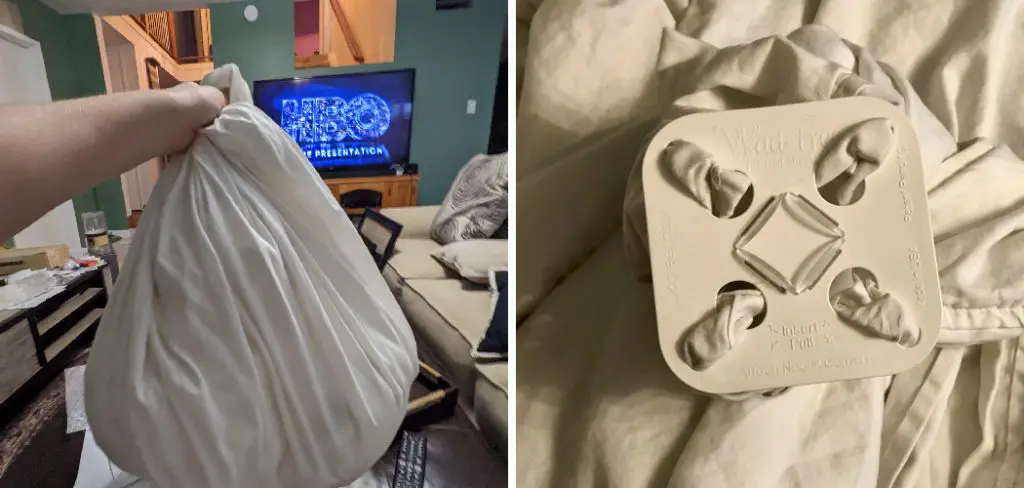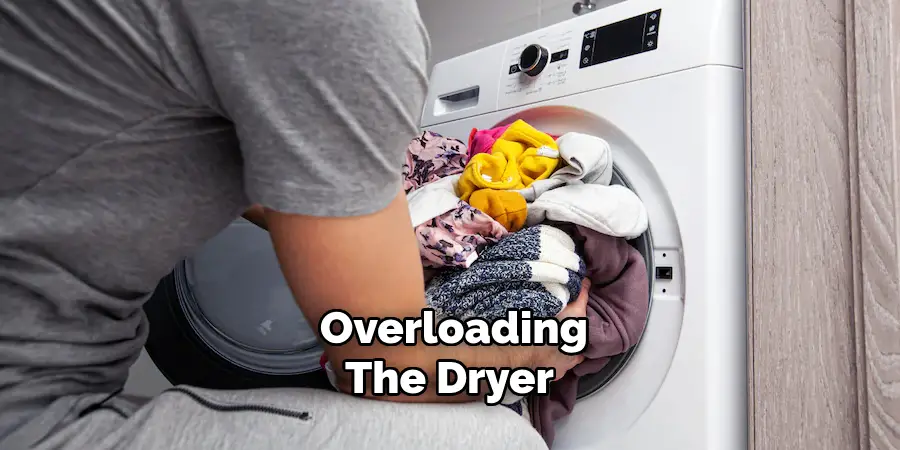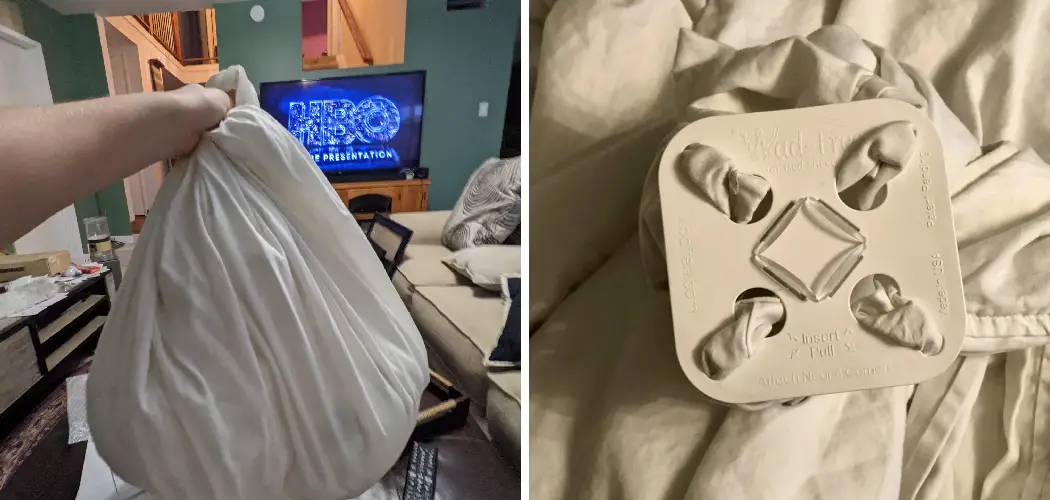Are you tired of your duvet cover getting all balled up in the dryer? Don’t worry, you’re not alone. This is a common issue that many people face when doing laundry. However, you can take some simple steps to prevent this from happening and keep your duvet cover looking smooth and wrinkle-free.

One of the most common laundry frustrations is finding your duvet cover balled up in the dryer. This results in uneven drying causes wrinkles, and can potentially damage the fabric. Fortunately, there are several strategies you can employ to prevent this from happening.
By following a few simple steps on how to prevent duvet cover from balling up in dryer, you can ensure your duvet cover dries evenly and stays in top condition.
Why Does My Duvet Cover Ball Up in the Dryer?
Before we dive into the solutions, it’s important to understand why your duvet cover may be balled up in the dryer in the first place. There could be a few reasons for this:
- Overcrowding: If you have too many items in the dryer at once, there won’t be enough room for everything to move around freely. This can result in your duvet cover getting bunched up with other items.
- Heat and Friction: The dryer’s heat and friction can cause fabrics to stick together, especially if they are made from synthetic materials like polyester or nylon.
- Incorrect Settings: Using a high heat setting or over-drying your duvet cover can also cause it to ball up in the dryer.
Now that we know why this happens, let’s explore some ways to prevent it.
What Will You Need?
Before you begin, make sure you have these items on hand:
- Your duvet cover (of course!)
- Dryer balls or clean tennis balls
- A dryer sheet or a damp washcloth
Once you have these items, you’re ready to start.
10 Easy Steps on How to Prevent Duvet Cover From Balling Up in Dryer
Step 1. Prepare Your Duvet Cover:
Before placing your duvet cover in the dryer, give it a good shake to ensure it is spread evenly. This helps to prevent any initial bunching and sets you up for a smoother drying process. Additionally, fastening any buttons, snaps, or zippers on the duvet cover can help to minimize the chance of it getting tangled with other items or itself during the drying cycle.
Step 2. Avoid Overloading the Dryer:

When loading the dryer, do not overcrowd it. Overloading the dryer prevents proper air circulation and movement within the drum, increasing the likelihood of your duvet cover balling up. Instead, load the dryer with your duvet cover and only a few other lightweight items. This not only allows for better air distribution but also helps achieve an even dry.
Step 3. Use Dryer Balls or Clean Tennis Balls:
Add a few dryer balls or clean tennis balls to the dryer along with your duvet cover. These items work by creating space between the layers of fabric, promoting even drying and reducing the risk of clumping. The added movement from the balls can also help to fluff up your duvet cover, ensuring a softer end result.
Step 4. Include a Dryer Sheet or Damp Washcloth:
Including a dryer sheet or a damp washcloth in the dryer can help to enhance the drying process and minimize static cling, which can cause fabrics to stick together. A dryer sheet can add a pleasant scent and reduce static, while a damp washcloth helps to maintain a bit of moisture within the dryer, preventing the fabrics from becoming too dry and sticking together. Simply toss a dryer sheet or slightly damp washcloth into the dryer, your duvet cover, and dryer balls. This simple addition can significantly affect how your duvet cover dries.
Step 5. Select the Right Dryer Settings:
Choosing the appropriate dryer settings prevents your duvet cover from balling up. Opt for a low to medium heat setting to reduce the fabric’s wear and tear and avoid excessive shrinkage or damage. If your dryer has a “bulky” or “bedding” setting, this can be particularly useful as it is designed to handle larger items more effectively. Additionally, consider using a “tumble dry” or “gentle” cycle setting, which offers more tender handling of delicate items like duvet covers, promoting even drying without excessive agitation.
Step 6. Pause and Rearrange Mid-Cycle:
Halfway through the drying cycle, take a moment to pause the dryer and rearrange your duvet cover. This break allows you to shake out any balled-up portions and redistribute the fabric, which helps to ensure even drying. Doing so can prevent the duvet cover from becoming twisted or clumped, leading to a smoother and more efficient drying process.
Step 7. Consider Air Drying Larger Items:

For those with the time and space, air drying can be an excellent alternative to machine drying larger items like duvet covers. After a short spin in the dryer to remove excess water, hang your duvet cover on a clothesline or drying rack, spreading it out evenly to promote air circulation. This method not only helps to maintain the longevity of the fabric but also reduces the risk of it balling up.
Step 8. Fold Immediately After Drying:
Once the drying cycle is complete, promptly remove your duvet cover from the dryer and fold it neatly. Leaving the duvet cover in the dryer for an extended period can lead to wrinkles and creases forming. Immediate folding helps keep the fabric smooth and makes it easier to store or put back on your bed without additional wrinkles.
Step 9. Shake Out Between Stages:
In between drying stages, give your duvet cover a good shake to ensure even distribution of the fabric. This step can help to prevent any areas from remaining wet or balled up. Continued shaking and spreading out of the cover will achieve a more uniform drying process and reduce wrinkles.
Step 10. Store Properly:
Finally, ensure that your duvet cover is stored correctly when not in use. Storing it in a cool, dry place where it is not crammed tightly can help maintain its shape and prevent future clumping when washed and dried. Consider using a breathable storage bag to protect it from dust and moisture, keeping it in optimal condition for the next use.
By incorporating these steps into your laundry routine, you can effectively prevent your duvet cover from balling up in the dryer and enjoy a smoother, wrinkle-free result every time.
5 Additional Tips and Tricks

- Use Dryer Balls: Adding a few dryer balls or tennis balls to your dryer can help keep the duvet cover from balling up by providing enough movement and separation during the drying process.
- Safety Pins or Clips: Pinning the corners of the duvet cover to the corners of the duvet itself before placing it in the dryer can keep everything in place and prevent tangling.
- Dry with Towels: Adding a couple of clean, dry towels to the dryer can help distribute the weight and prevent the duvet cover from clumping together.
- Frequent Fluffing: Pausing the dryer cycle every 10-15 minutes to manually shake out and fluff the duvet cover can help maintain even drying and prevent balling up.
- Low Heat Setting: Using a lower heat setting and extending the drying time can reduce the chance of the duvet cover overheating and tangling into a ball.
With these additional tips and tricks, you can ensure that your duvet cover comes out of the dryer looking smooth and wrinkle-free.
5 Things You Should Avoid
- Overloading the Dryer: Avoid putting too many items in the dryer simultaneously. Overloading can restrict movement, leading to clumping and uneven drying of your duvet cover.
- Skipping the Safety Pins: Do not skip using safety pins or clips. They are crucial in keeping the duvet cover and duvet aligned, preventing tangles and balling up.
- High Heat Setting: Avoid using high heat settings. High temperatures can cause the fabric to shrink and increase the likelihood of the duvet cover tangling.
- Ignoring Regular Checks: Avoid letting the dryer run without periodically checking the duvet cover. Failing to pause and fluff the cover can result in stubborn clumps that are hard to smooth out later.
- Using Fabric Softener: Avoid using fabric softener sheets in the dryer. They can leave residues that may make the fabric sticky and more prone to clumping together.

By avoiding these common mistakes, you can maintain the quality and appearance of your duvet cover while ensuring it dries effectively.
Conclusion
How to prevent duvet cover from balling up in dryer involves a combination of proactive measures and mindful practices. By utilizing tools like dryer balls or safety pins, you can facilitate better movement and prevent tangling.
Additionally, incorporating lightweight items such as towels can help distribute weight evenly. It’s crucial to select appropriate dryer settings, such as using low heat and extending drying time, which can mitigate fabric shrinkage and clumping. Regularly pausing the drying cycle to fluff and rearrange the duvet cover ensures consistent drying and prevents the formation of stubborn clumps.
Furthermore, avoiding overloading the dryer and steering clear of fabric softeners and high heat settings will help maintain the integrity and appearance of your duvet cover. Following these tips and avoiding common pitfalls will result in a smooth, wrinkle-free duvet cover, making your laundry routine simpler and more efficient.
About
Angela is the chief editor of Indoorense. She began her career as an interior designer before applying her strategic and creative passion to lifestyle and home.
She has close to 15 years of experience in creative writing and online content strategy for housekeeping and cleaning,home decorations as well as other efforts.
She loves her job and has the privilege of working with an extraordinary team. She lives with her husband, two sons, and daughter in Petersburg. When she’s not busy working she spent time with her family.

